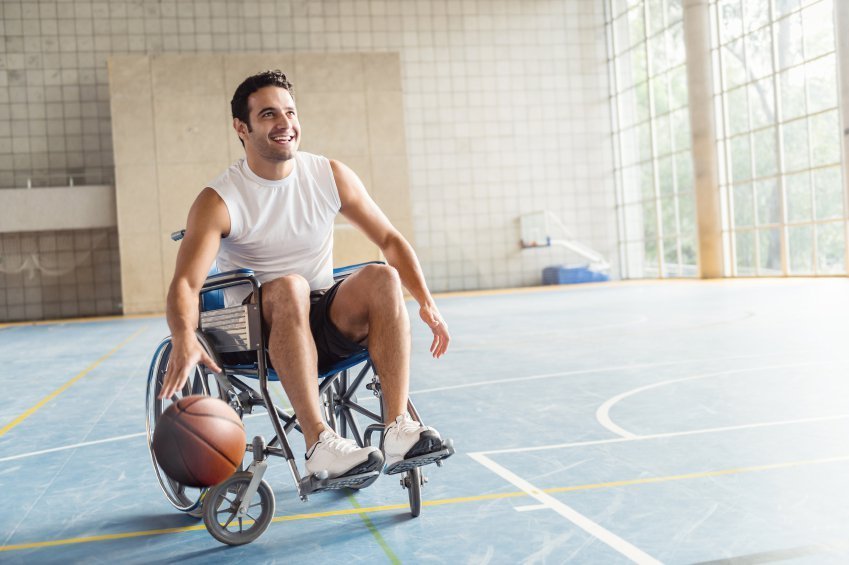1. Get to class early. Spend a few minutes before class to get to know some of your students, not just to set up your equipment. This is prime time to show your clients that you are a) a relatable human being, and b) this gives you some time to learn client needs and what they are looking to get out of your class. Wander around too; don’t just wait for them to come to you. Remember as much significant information about clients as you can! Showing that you remember someone shows that you care and inspires client loyalty.
2. Own It. I should know who the instructor is the MINUTE I walk into the room. There’s no room for nervousness here. Even if you are nervous, fake that confidence until it’s real! If I am paying to take a class, I want to be confident in my instructor’s abilities.
3. Pump up the jams! BEFORE class starts. If you are about to teach a high-intensity class- like spinning- set the tone before clients enter the room. Chances are that most of your students have crawled out of bed to take this class before work or forced themselves to come after a long day. They need a psychological PUSH to rev them up. Don’t let them fall asleep on the bike.
4. Make sure to keep energy HIGH! Particularly in small classes.
There are a bunch of strategies you can keep in your arsenal. Here are just a few:
• Call people out by name. Make eye contact and encourage them to power through the workout.
• Make introductions between students to create a “pack mentality”. You’re in this together!
• Compliment them on actually making it to class when they could just have easily been sleeping—if it was a morning class—or headed straight to the bar after work. Instead, they’re here! YAY!
5. Encourage partner or group work.
Require students to make a connection by:
• Pairing up for a two-person exercise.
• Have half the class work super intense while the other half cheers them on.
• Tell students to cheer on the person exactly to their left/right. Give high fives (who doesn’t love a high five?).
6. Make a soundtrack full of FRESH jams, and while you’re at it, match the music to the beat! I personally need a good, blood pumping beat to get me in the right mental state for an intense workout. But, I need that feeling of something NEW each time to get that same effect. Don’t use the same soundtrack every class and, while you’re at it, check out the top 40 chart once in a while to keep relevant. And, try to match the workout to the beat! It helps the class synchronize and nothing is more motivating than being in sync as a unit.
7. Recover gracefully from mistakes. It’s inevitable: at some point in time, something will break or won’t go as planned. To prepare for this, make a list of things that could go wrong beforehand, and come up with solutions. Whether your music system breaks or you forget to repeat an exercise on the other side, find ways to roll with the punches gracefully and seamlessly. No one is going to walk out of the room in a huff if they see you are calm, poised and actively working on the issue.
8. Encourage encouraging noise! If you’ve been to any sporting event, you know that players thrive on the roar of the crowd. It’s no different in a group class studio. If there is someone screaming, whooping or doing a Native American battle cry – encourage this behavior and build on it! Usually when people are making these sounds, it means they are having a fantastic time. This is a major complement so don’t ignore it. Let students feed energy off each other and it will change the entire atmosphere of the class.
9. Correct students, but don’t make a scene. No matter what fitness level students are at, they can always improve. You earn trust from your students if you correct them once in a while. Push them deeper into a pose, make sure both feet are facing the right way—it goes a long way in showing your expertise. I want to know I am in fully capable hands. With that being said, don’t correct me from across the room and, for God’s sake, pull the mic away when you do! Most instructors don’t realize they’re embarrassing students this way. Just remember to pull the mic away for corrections.
10. Promote your colleagues! Contrary to popular belief, speaking well about another colleague does NOT take business away from you. Talk about how awesome the next instructor’s class is or mention how good an instructor is at a certain area of expertise. Talking badly about other instructors puts a bad taste in your students’ mouths.
11. Let students know when they are doing well. Praise students who are visibly trying their hardest. This goes a long way in boosting egos and encouraging them to keep coming back, especially if you call them out when they don’t realize you are watching.
12. Prepare for things to go wrong. Our bodies can do some pretty weird things when we exercise—things not everyone, especially first-timers—may not be familiar with. We sweat uncontrollably, make pained noises, hear popping sounds, and our muscles start to shake all over the place when they start to burn out. Reassure your students that all of this is normal to keep going!
13. Come up with an end-of-class ritual. Don’t just push students back into the real world straight after a workout. Ease them out of the endorphin high and congratulate them on a job well done. This could be a series of stretches or some light breathing techniques. Either way, ease them out of that mental state so they can be excited, feel accomplished, and then get on with their day.
14. Stay after class too. Don’t sprint out of the class once the workout is done. Stay after to get social with students. This is a great opportunity to get feedback on your class, whether positive or negative. Both forms will help you improve and gather ideas on how to make their next experience even better.
Most importantly, just stay after to chat and show that you are a normal person when you don’t have your supertrainer suit on. It will go a long way in forming loyal students and create viable referrals.










